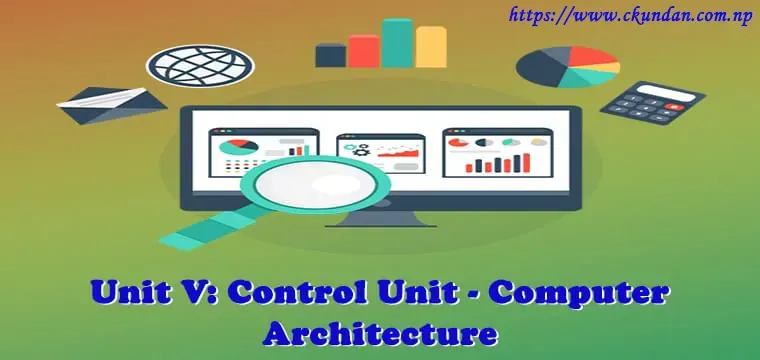The control unit (CU) is a component of a Computer's Central Processing Unit (CPU) that directs the operation of the processor. It tells the computer's memory, arithmetic/logic unit, and input and output devices on how to respond to a program's instructions. It controls on primitive operations (micro-operations).
In this “Control Unit - Computer Architecture” you will learn about following topics:
- Introduction of Control Unit
- Registers Involved In Each Instruction Cycle
- Micro-Operations for Different Sub-Cycles
- The Fetch Cycle
- The Indirect Cycle
- The Execute Cycle
- The Interrupt Cycle
- Control of Processor/CPU
- Responsibilities of CPU
- Functional Requirement of CPU
- Structure of Control Unit with Control Signals
- Types of Design Issues in Control Unit
- Hardwired Control Unit
- Two Main Issues in Hardwired Implementation
- Control Unit Input
- Control Unit Logic
- Micro-Programmed Control Unit
- Difference between Hardwired and Micro-programmed Control Unit
- Types of Micro-instruction Format
- Horizontal Micro-instruction Format
- Vertical Micro-instruction Format
- Difference between Horizontal and Vertical Micro-instruction Format
- Microinstruction Sequencing
- Microinstruction Sequencing Techniques
- Two Address Field Microinstruction
- Single Address Field Microinstruction
- Variable Format Microinstruction
- Micro-instruction Execution
==== Point to Note ====
If you like to contribute, you can mail us BCA Notes, BCA Question Collections, BCA Related Information, and Latest Technology Information at [email protected].
See your article appearing on BCA Notes (Pokhara University) main page with your designation and help other BCA Students to excel.
Please write comments if you find anything incorrect, or you want to share more information about the topic discussed above.
BCA 5th Semester Computer Architecture Notes Pdf:
- Unit I: Introduction To Computer Architecture And Organization
- Unit II: Register Transfer And Micro Operations
- Unit III: Central Processing Unit (CPU)
- Unit IV: Computer Arithmetic
- Unit VI: Memory Organization
- Unit VII: Input/Ouput Organization
- Unit VIII: Reduced Instruction Set Computer (RISC)
- Unit IX: Introduction To Parallel Processing
- Unit X: Multicore Computers







![BCA 1st Semester Question Papers Pdf [Updated]](https://blogger.googleusercontent.com/img/b/R29vZ2xl/AVvXsEgLAEigAxHSrlcaODdgkV0lKVobAcEHQq7xn1ca8t7uB7DBu5PQtNL2hkGYuHFDley4guAYwc8qUJ5gX79ejw9gT4SpnpeTd0lWIkF31OobOMaShc4_wi7rZTB00RGosV1d-HtKJ0QoClENdw1Xqe5B_ji8fuxwS5thSXCqAKLGBI-GvMCCCzsvtt-EaxA/w72-h72-p-k-no-nu/bca-1st-semester-old-question-pu.jpg)
0 Comments